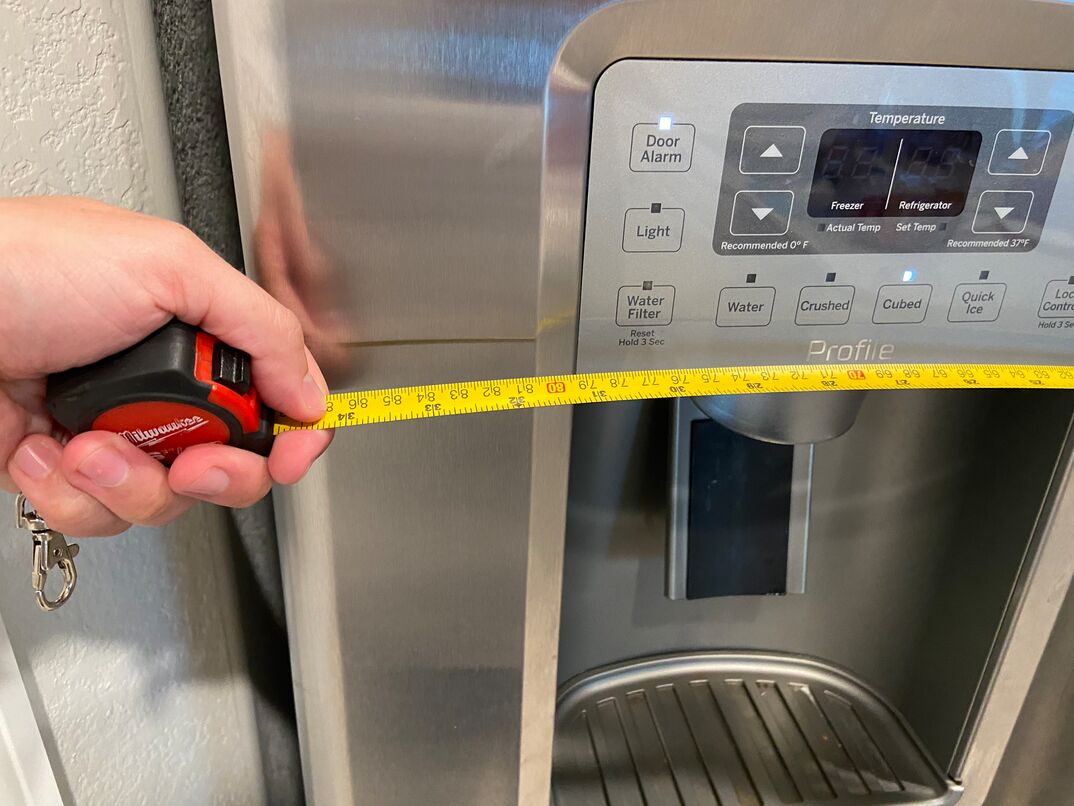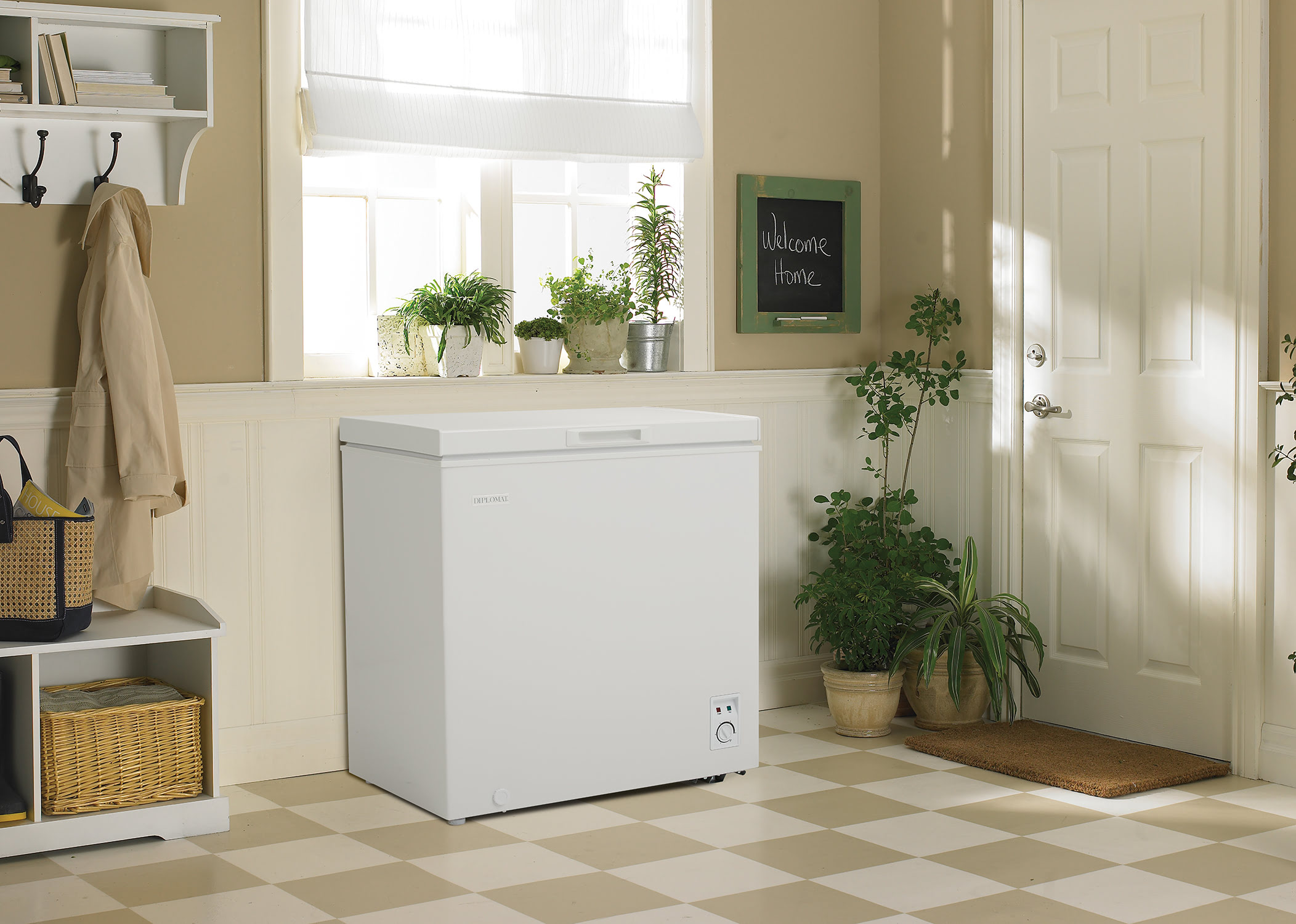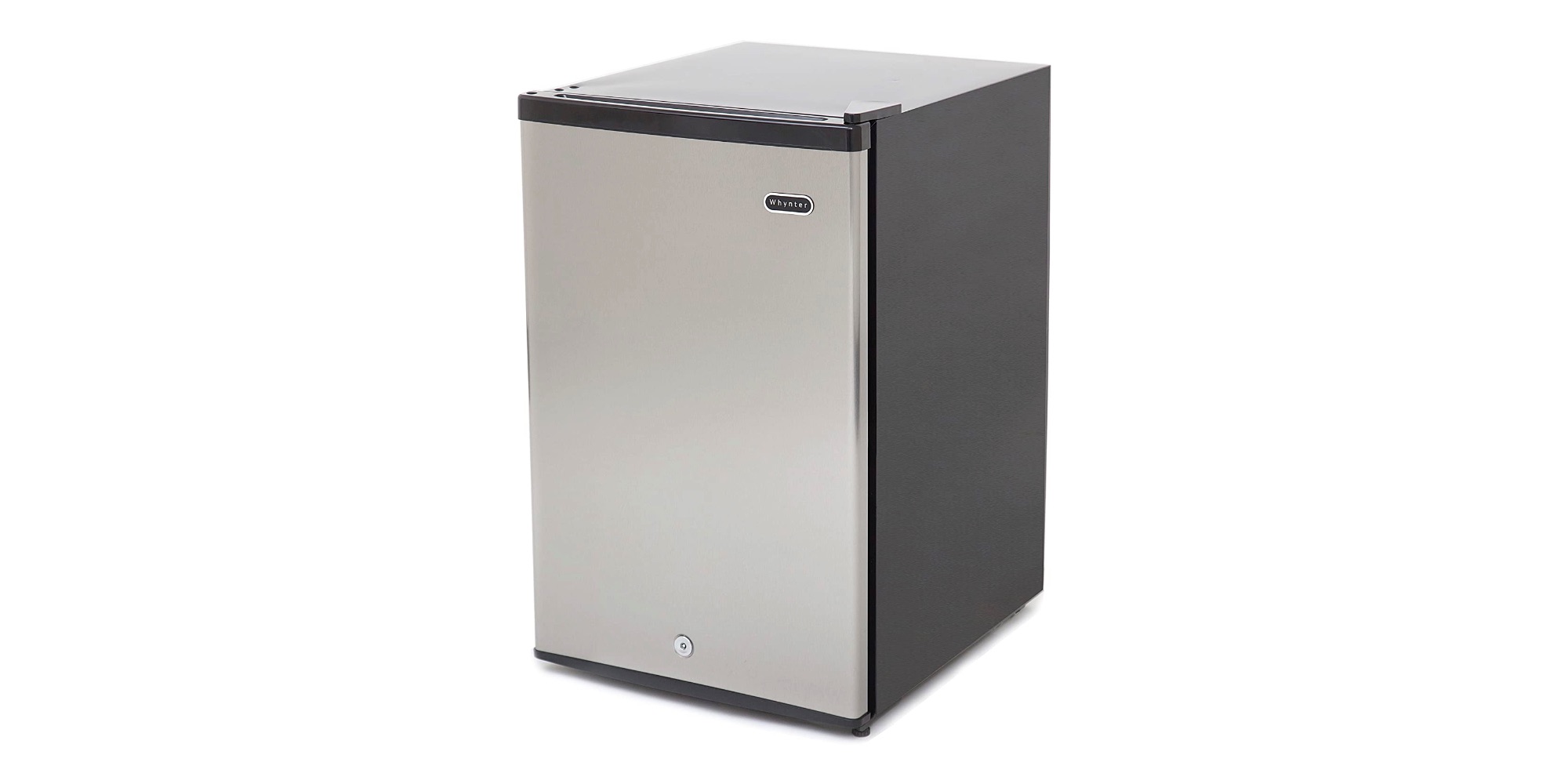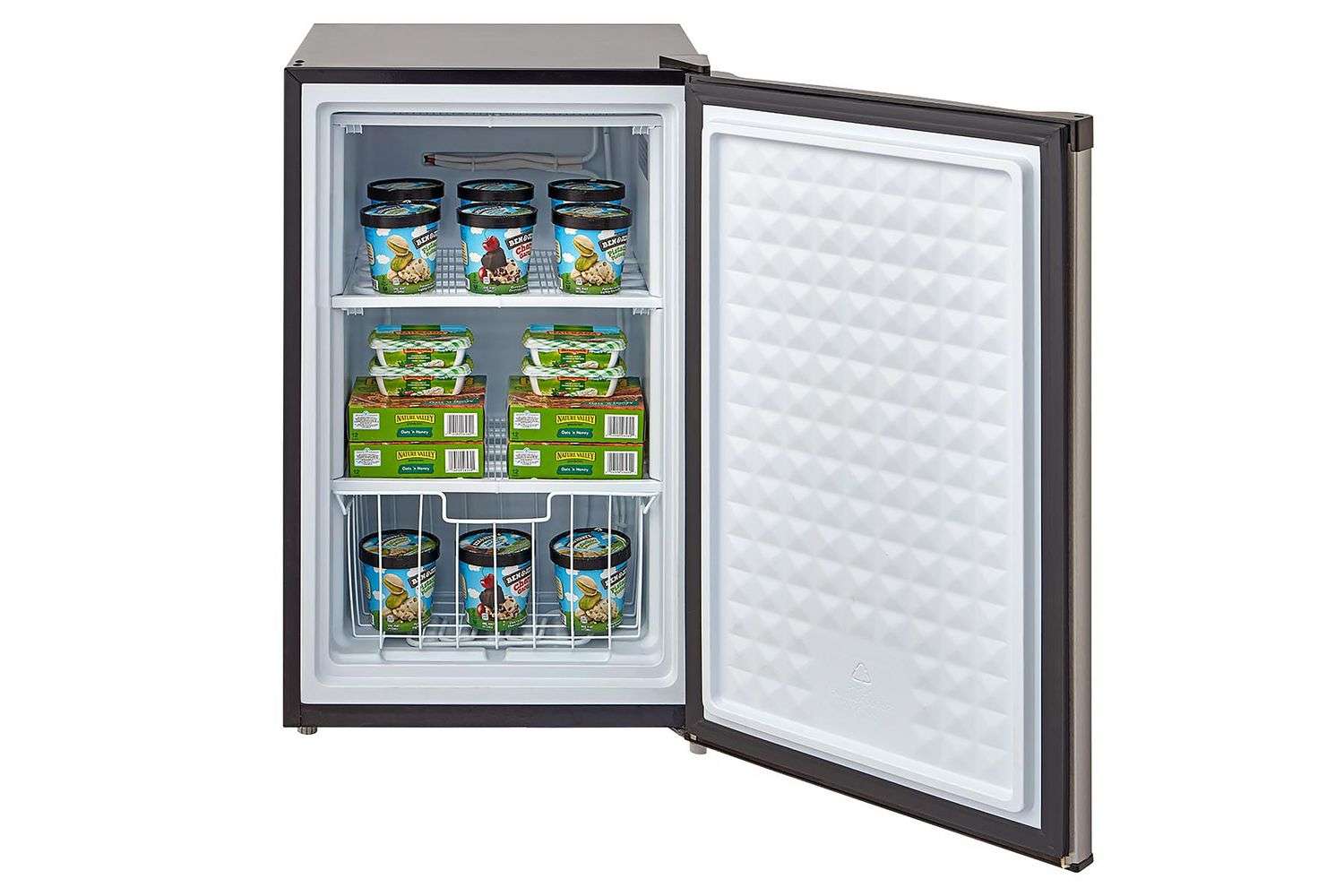

Articles
What Is Cubic Feet In Refrigerator
Modified: May 6, 2024
Discover what cubic feet means when it comes to refrigerators. Read our informative articles to understand this important measurement for choosing the right appliance.
(Many of the links in this article redirect to a specific reviewed product. Your purchase of these products through affiliate links helps to generate commission for Storables.com, at no extra cost. Learn more)
Overview
When it comes to purchasing a refrigerator, one important factor to consider is the cubic feet measurement. Cubic feet refers to the total capacity of the refrigerator, determining how much food and beverages it can hold. Understanding cubic feet and its significance will help you choose the right-sized refrigerator to meet your needs.
Refrigerators come in various sizes and configurations, catering to different lifestyles and household requirements. The size of a refrigerator is often measured in cubic feet or cubic inches, representing the internal storage space available to store food and other perishable items. Generally, the larger the cubic feet measurement, the more storage space the refrigerator offers.
The cubic feet measurement is crucial in determining the refrigerator’s overall capacity and is used by manufacturers to classify their products. It serves as a standard unit of measurement that you can rely on when comparing different models and brands.
Having a clear understanding of cubic feet in refrigerators is essential to make an informed decision and ensure that your chosen refrigerator meets your storage needs. By considering factors such as your family size, cooking habits, and grocery shopping frequency, you can determine the ideal cubic feet size for your refrigerator.
In the next sections, we will delve deeper into the definition of cubic feet, its importance in refrigerators, how to calculate cubic feet, common cubic feet sizes in refrigerators, and the factors to consider when choosing a refrigerator size. By the end, you will be equipped with the knowledge you need to select a refrigerator that perfectly suits your requirements. So let’s get started!
Key Takeaways:
- Understanding cubic feet in refrigerators is crucial for choosing the right-sized appliance that meets your family’s storage needs, prevents overcrowding, and ensures proper organization of food and beverages.
- Calculating cubic feet in a refrigerator involves measuring the length, width, and height of the internal storage space and multiplying them together. Consider factors such as family size, kitchen space, and cooking habits when deciding on the right size for your refrigerator.
Read more: How To Calculate Cubic Feet For Refrigerator
Definition of Cubic Feet
Cubic feet is a unit of measurement used to quantify the volume or capacity of three-dimensional objects, commonly used to measure the internal space of appliances like refrigerators. It represents the amount of space occupied by an object in cubic units.
To understand cubic feet, it’s important to first grasp the concept of a cube. A cube is a three-dimensional shape with six identical square faces. Each face has equal length, width, and height. In the case of a refrigerator, the internal space can be visualized as a rectangular prism, which is a box-shaped object with six rectangular faces, where the length, width, and height can vary.
Cubic feet is calculated by multiplying the length, width, and height of a given space or object. For example, if a refrigerator has a length of 3 feet, a width of 2 feet, and a height of 5 feet, you would multiply these dimensions (3 x 2 x 5) to get the total cubic feet measurement, which in this case would be 30 cubic feet.
In the context of refrigerators, cubic feet is used to determine the overall storage capacity. It represents the total amount of space available to store food, beverages, and other items. This measurement is crucial for individuals and families to ensure they have enough room for their daily necessities and groceries.
It’s important to note that the cubic feet measurement refers to the usable space inside the refrigerator, excluding any obstructions such as ice makers, shelves, and drawers. Manufacturers provide the cubic feet measurement of their refrigerators to help consumers make informed decisions when purchasing appliances.
By understanding the definition of cubic feet, you can better visualize and comprehend the internal capacity of refrigerators, making it easier to choose the right size that suits your household’s needs.
Importance of Cubic Feet in Refrigerators
The cubic feet measurement plays a crucial role in determining the usability and functionality of a refrigerator. It determines the overall storage capacity, allowing you to gauge how much food, beverages, and other items you can store inside. Understanding the importance of cubic feet in refrigerators will help you make an informed decision when selecting the right-sized appliance for your home.
One of the key benefits of knowing the cubic feet measurement is that it helps you assess the refrigerator’s capacity to meet your specific needs. Whether you have a large family with frequent grocery shopping trips or you simply want ample storage space for bulk items or special occasions, having a refrigerator with the appropriate cubic feet size is essential.
Choosing a refrigerator with the right cubic feet capacity ensures that you have enough space to store all your perishable items without overcrowding the fridge. Overcrowding can lead to food spoilage, as there may not be sufficient airflow to keep everything properly chilled. With a larger cubic feet measurement, you have the flexibility to store a variety of items, including large platters, leftover containers, and even bulky fruits and vegetables.
On the other hand, if you opt for a refrigerator with a smaller cubic feet measurement than you need, you may find yourself constantly struggling to fit in all your groceries and compromising on organization. This can lead to inefficient use of space, difficulty in finding items, and the need for frequent trips to the grocery store to restock.
Additionally, the cubic feet measurement directly affects the physical size of the appliance. If you have limited kitchen space or specific measurements to adhere to, knowing the cubic feet can help you find a refrigerator that fits perfectly in your designated area without any issues. It ensures that you can optimize your kitchen layout and maintain a seamless flow in your cooking and food preparation process.
Understanding the importance of cubic feet in refrigerators empowers you to make a well-informed decision when selecting an appliance. By considering your household’s storage needs, you can choose a refrigerator with the optimal cubic feet capacity, maximizing efficiency, organization, and convenience in your kitchen.
How to Calculate Cubic Feet in a Refrigerator
Calculating the cubic feet in a refrigerator is a simple process that requires measuring the length, width, and height of the internal storage space. By following these steps, you can accurately determine the cubic feet measurement of your refrigerator.
- Clear out the refrigerator: Before taking measurements, it is important to remove all items from the refrigerator to ensure accurate measurements.
- Measure the length: Using a measuring tape, measure the internal length of the refrigerator from one end to the other. Make sure to measure from the back of the appliance to the inside front of the refrigerator.
- Measure the width: Measure the internal width of the refrigerator from one side to the other. Ensure that the measuring tape is straight and parallel to the sides of the appliance.
- Measure the height: Measure the internal height of the refrigerator from the bottom to the top. Place the measuring tape against the back wall of the refrigerator and extend it vertically to the highest point inside the appliance.
- Multiply the measurements: Once you have obtained the length, width, and height measurements, multiply them together. The result will give you the cubic inches of the refrigerator.
- Convert to cubic feet: To convert cubic inches to cubic feet, divide the cubic inch measurement by 1728. This is because there are 1728 cubic inches in one cubic foot. The resulting value will give you the exact measurement in cubic feet.
For example, if the length of the refrigerator is 60 inches, the width is 30 inches, and the height is 70 inches, you would multiply these measurements together (60 x 30 x 70) to get the total cubic inches. Then, divide the cubic inch measurement by 1728 to convert to cubic feet. The final result will give you the cubic feet capacity of your refrigerator.
By calculating the cubic feet in your refrigerator, you can have a clear understanding of its storage capacity. This knowledge helps you determine if the refrigerator meets your storage needs and ensures that it can accommodate all your food and beverages efficiently.
Cubic feet in a refrigerator refers to the total storage capacity inside the fridge. When shopping for a refrigerator, consider the cubic feet to ensure it meets your storage needs.
Common Cubic Feet Sizes in Refrigerators
Refrigerators come in a variety of sizes to cater to different household needs and space constraints. Understanding the common cubic feet sizes of refrigerators can help you narrow down your options and find the right-sized appliance for your kitchen. Here are some of the most common cubic feet sizes found in refrigerators:
- Compact/Mini Refrigerators: Compact or mini refrigerators are typically smaller in size and are perfect for dorm rooms, offices, or small apartments. They usually range from 1.7 to 4.5 cubic feet, offering just enough space to store essentials like beverages, snacks, and a small amount of perishable food.
- Small Refrigerators: Small refrigerators are commonly used in small kitchens or as secondary fridges in larger households. These refrigerators typically have a capacity between 5 and 10 cubic feet, providing enough storage space for a small family or individuals who don’t require a lot of food storage.
- Medium-sized Refrigerators: Medium-sized refrigerators are suitable for average-sized families or households that require moderate storage space. These refrigerators typically have a capacity ranging from 12 to 18 cubic feet, providing ample room for groceries, leftovers, and beverages.
- Large Refrigerators: Large refrigerators are designed for larger families or households that need generous storage space. These refrigerators generally have a capacity between 18 and 25 cubic feet or more, accommodating large quantities of food, bulk items, and beverages.
- French Door Refrigerators: French door refrigerators are known for their spacious storage capacity and unique design. These refrigerators often have a capacity of 20 to 30 cubic feet or more, offering flexibility in organizing and storing food. The French door design allows for easy access to fresh food compartments while providing wide shelves and drawers in the refrigerator and freezer sections.
It’s important to note that manufacturers may have slight variations in cubic feet sizes within these general categories. Additionally, the external dimensions of a refrigerator are not solely determined by the cubic feet measurement, as factors like shelving, drawers, and door sizes can affect the overall size.
When considering the cubic feet size of a refrigerator, it’s essential to assess your household’s storage needs, available kitchen space, and personal preferences. By understanding the common cubic feet sizes, you can make a more informed decision and choose a refrigerator that perfectly fits your requirements.
Read more: How To Measure Cubic Feet Of A Freezer
Factors to Consider When Choosing a Refrigerator Size
Choosing the right refrigerator size is essential to ensure that it meets your storage needs and fits seamlessly into your kitchen. Consider the following factors when determining the appropriate size for your refrigerator:
- Family Size: The size of your family plays a significant role in determining the size of the refrigerator you need. Larger families typically require more storage space for groceries, leftovers, and beverages. Assess your family’s eating habits and the frequency of grocery shopping to determine the appropriate cubic feet capacity.
- Kitchen Space: Consider the available space in your kitchen before purchasing a refrigerator. Measure the height, width, and depth of the area where the fridge will be placed. Ensure that the chosen size fits comfortably without obstructing walkways or other kitchen appliances.
- Cooking and Entertaining Habits: If you enjoy cooking at home frequently or frequently entertain guests, you may need a larger refrigerator to accommodate ingredients, prepared dishes, and beverages. Assess the types of food you frequently store and whether you need space for large platters or specialty items.
- Grocery Shopping Patterns: Take into account your grocery shopping frequency and the quantity of perishable items you typically purchase. If you prefer to stock up on groceries or buy in bulk, you may need a larger refrigerator with ample storage space.
- Lifestyle and Special Requirements: Consider any special requirements or lifestyle factors that may impact your refrigerator size choice. For example, if you have dietary restrictions and rely heavily on fresh produce, you may need a refrigerator with more space for fruits and vegetables.
- Budget: The size of the refrigerator can impact its cost. Larger refrigerators with higher cubic feet capacities tend to be more expensive. Set a budget and strike a balance between the required storage space and the budget you have allocated for a new refrigerator.
By evaluating these factors, you can determine the appropriate size for your refrigerator that meets your storage needs while taking into account your kitchen space, lifestyle, and budget. Additionally, consulting with a sales representative or reading customer reviews can provide valuable insights into the practicality and functionality of different refrigerator sizes and models.
Choosing the right refrigerator size is essential for maintaining an organized and efficient kitchen. With careful consideration of your specific requirements, you can find a refrigerator that aligns with your needs and enhances your daily life.
Conclusion
Understanding cubic feet in refrigerators is crucial when it comes to selecting the right appliance for your home. By knowing the cubic feet measurement, you can determine the storage capacity and make an informed decision that aligns with your household’s needs and lifestyle.
We learned that cubic feet is a unit of measurement used to quantify the volume or capacity of three-dimensional objects, such as refrigerators. It represents the amount of space available to store food, beverages, and other items. Calculating cubic feet in a refrigerator involves measuring the length, width, and height of the internal storage space and multiplying them together.
The importance of cubic feet in refrigerators lies in its ability to determine storage capacity and ensure that the appliance can accommodate the needs of your family. By choosing a refrigerator with the appropriate cubic feet size, you can prevent overcrowding, ensure proper organization, and maintain the freshness of your food.
Common cubic feet sizes in refrigerators range from compact/mini refrigerators (1.7-4.5 cubic feet) to large French door refrigerators (20-30 cubic feet or more). Consider factors such as family size, kitchen space, cooking habits, and grocery shopping patterns when deciding on the right size for your refrigerator.
In conclusion, understanding cubic feet in refrigerators is essential for making well-informed decisions when purchasing a new appliance. By considering your specific needs and evaluating the available options, you can choose a refrigerator that optimizes storage space, fits seamlessly into your kitchen, and enhances your overall culinary experience. So, take the time to measure, calculate, and select the perfect cubic feet size for your next refrigerator purchase.
Now that you're familiar with what cubic feet mean in refrigerators, why not learn how to measure this space in freezers? Accurate measurements ensure you maximize storage and efficiency. Next, if optimizing your fridge's inner layout sparks interest, dive into our upcoming guide on the best fridge storage solutions set for 2024. This piece offers practical tips and innovative ways to keep your groceries organized and fresh.
Frequently Asked Questions about What Is Cubic Feet In Refrigerator
Was this page helpful?
At Storables.com, we guarantee accurate and reliable information. Our content, validated by Expert Board Contributors, is crafted following stringent Editorial Policies. We're committed to providing you with well-researched, expert-backed insights for all your informational needs.















0 thoughts on “What Is Cubic Feet In Refrigerator”